Ranthambore National Park is one of India’s most famous wildlife reserves in the Sawai Madhopur district of southeastern Rajasthan. Known for its thriving tiger population, diverse wildlife, and scenic landscapes, the park offers an exciting opportunity for nature enthusiasts, wildlife photographers, and adventure seekers. Spanning over 1,334 square kilometres, Ranthambore is home to various species of flora and fauna, including leopards, sloth bears, crocodiles, and bird species.
Location
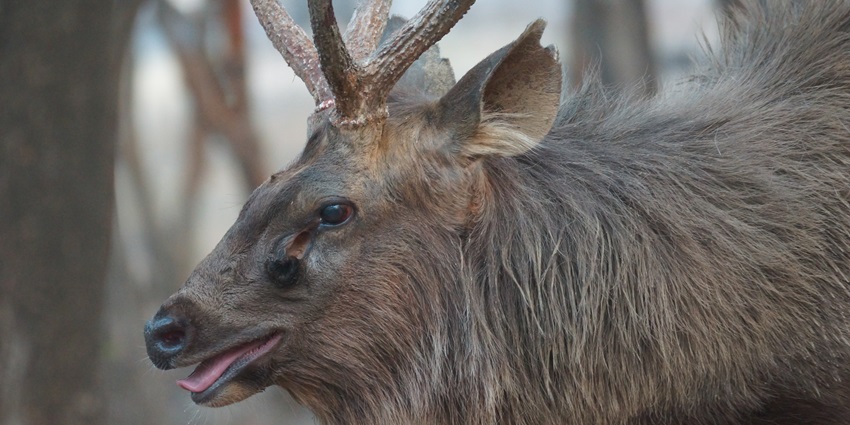
Photo: JULIAN MASON / Wikimedia Commons
Ranthambore National Park location is in Sawai Madhopur, Rajasthan, approximately 130 kilometres from Jaipur. The park lies in the southeastern part of the state and forms a part of the eastern borders of the Thar Desert. Ranthambore National Park address is easily accessible. Surrounded by the Aravali and Vindhya mountain ranges, it is a picturesque reserve offering a stunning blend of nature and wildlife.
Suggested Read: Jungle Safari Park Udaipur
How To Reach
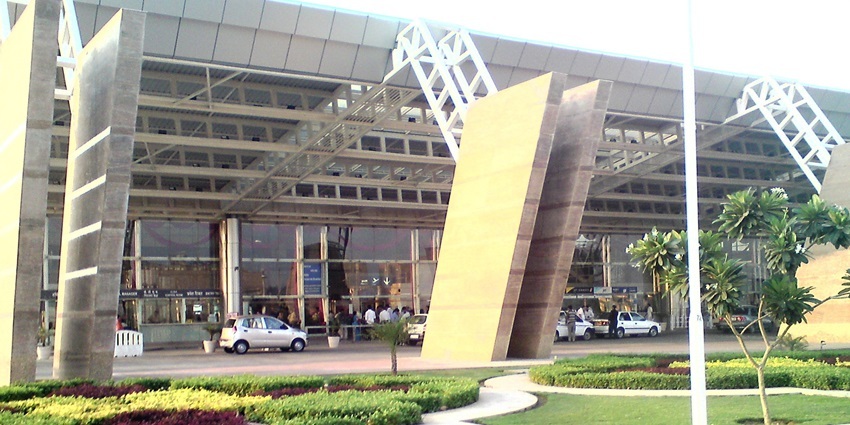
Photo: Sranjanm2002 / Wikimedia Commons
You can easily reach Ranthambore National Park through air, road or rail:
By Air: The nearest airport to Ranthambore National Park is Jaipur International Airport, which is around 160 km from the park. From Jaipur, visitors can hire a taxi or use bus services to reach Sawai Madhopur. The drive takes approximately 3 to 4 hours.
By Rail: The closest railway station is Sawai Madhopur Railway Station, just 11 km from the park. This station connects to major cities like Jaipur, Delhi, and Mumbai. One can easily hire a taxi from the station or use local transportation to reach the park.
By Road: Ranthambore is well-connected by road. Tourists can either take private taxis or use state-run buses to reach Sawai Madhopur from major cities like Jaipur (160 km), Delhi (360 km), and Kota (110 km). The roads are well-maintained, making for a comfortable drive.
Places To Visit In And Around Ranthambore National Park
Explore Nahargarh Rajasthan Wildlife Sanctuary activities and head to these tourist attractions around:
1. Ranthambore Fort
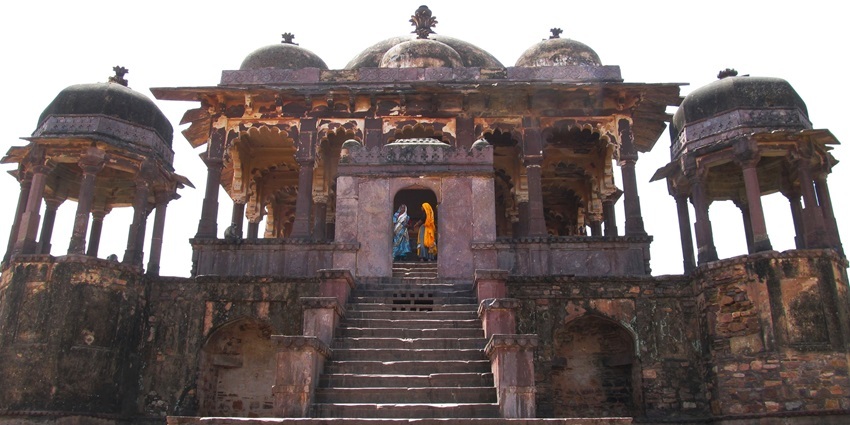
Photo: Abhinavmnnit / Wikimedia Commons
Located within the Ranthambore National Park, Ranthambore Fort is a UNESCO World Heritage Site and offers a rich historical experience. Built in the 10th century, the fort stands majestically on a hill and overlooks the park’s stunning landscapes. Its strategic location made it a stronghold for Rajput rulers, and the fort has been the site of several historical battles. Visitors can explore the ancient temples, grand gates, and intricately designed structures within the fort. The panoramic views of the national park from the fort are spectacular, offering visitors a unique vantage point.
Entry Fee: Free
Timings: 6 AM – 6 PM
Suggested Read: Jungle Safari In Rajasthan
2. Padam Talao
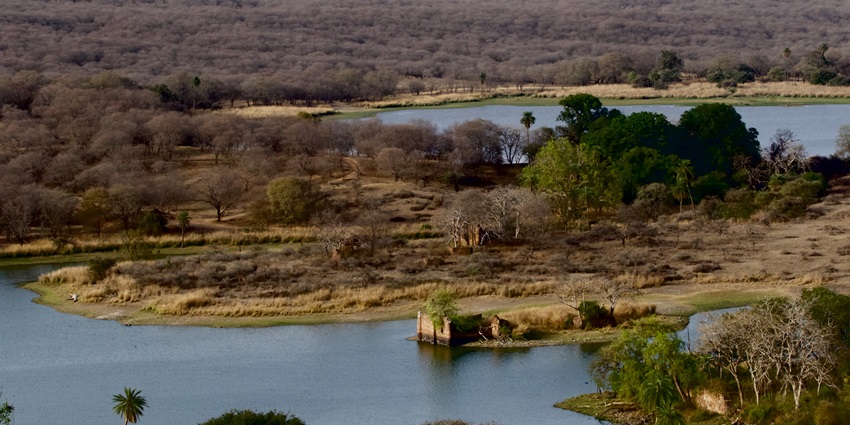
Photo: Kushal Kingshuk / Wikimedia Commons
Padam Talao is the largest lake in Ranthambore National Park and a critical water source for the wildlife within the reserve. The lake’s name, derived from the Hindi word for lotus, reflects its natural beauty, especially when the surface is adorned with blooming lotus flowers. Many animals, including tigers, deer, and birds, can often be seen near the lake, making it an excellent spot for wildlife photography. Visitors often catch glimpses of tigers coming to the lake for water during safaris. The scenic surroundings and abundant wildlife make Padam Talao a must-visit within the park.
Entry Fee: Included in park entry fee
Timings: According to the safari
3. Kachida Valley
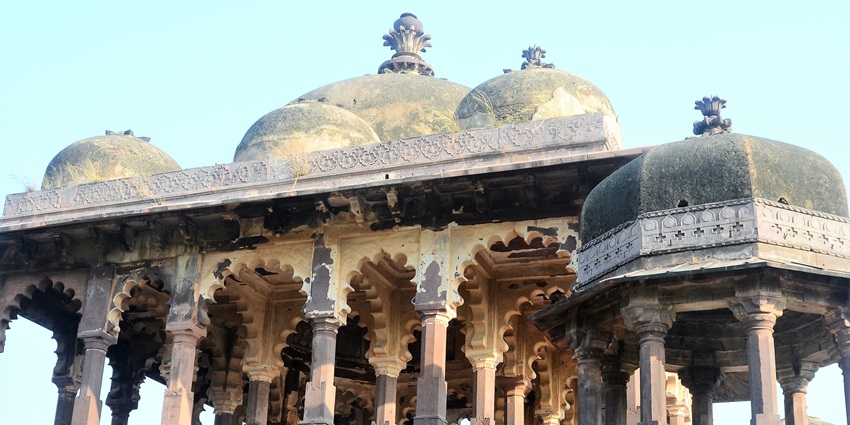
Photo: J P Dutt / Wikimedia Commons
Kachida Valley is a beautiful area on the outskirts of Ranthambore National Park and is well-known for its unique terrain and abundant wildlife. Low, rocky hills surround the valley and offer a peaceful retreat for wildlife like leopards and sloth bears, commonly spotted here. Kachida Valley is a preferred destination for visitors looking to explore beyond the central areas of the park. The valley’s rugged beauty and dense foliage starkly contrast the open grasslands found elsewhere in Ranthambore, making it a fantastic spot for photography and nature walks.
Entry Fee: Included in park entry fee
Timings: According to the safari
Suggested Read: Places To Visit Near Bharatpur
4. Raj Bagh Ruins
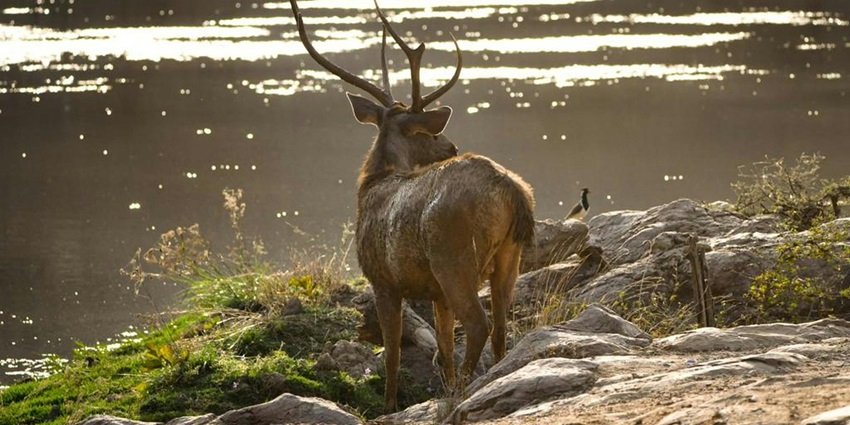
Photo: Daiwik Shah / Pexels / Image For Representation Only
The Raj Bagh Ruins, located between Padam Talao and Raj Bagh Lake, add a historical dimension to the Ranthambore landscape. These ancient stone structures consist of arches, palace remnants, and domes, giving the area a mystical charm. Surrounded by lush vegetation, the ruins provide a stunning backdrop for wildlife sightings, particularly tigers. The Raj Bagh Ruins give visitors a glimpse of Ranthambore’s royal past while they explore the park’s natural beauty. This combination of history and nature makes Raj Bagh Ruins a popular site within Ranthambore.
Entry Fee: Included in park entry fee
Timings: According to the safari
Where To Stay
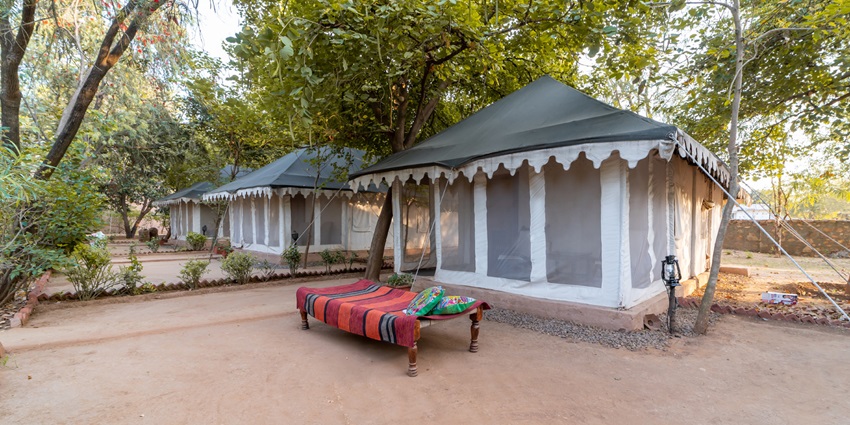
Photo: Tiger machan / Wikimedia Commons / Image For Representation Only
Ranthambore offers a range of accommodations to suit all budgets, from luxury resorts to budget hotels. Popular options include The Oberoi Vanyavilas, a five-star luxury resort, and Ranthambore Regency, known for its comfortable stay and proximity to the park. Many hotels and resorts in the area offer guided safaris, nature walks, and wildlife tours.
Suggested Read: Top Places To Visit Near Ajmer Rajasthan For An Enriching Experience
Where To Eat
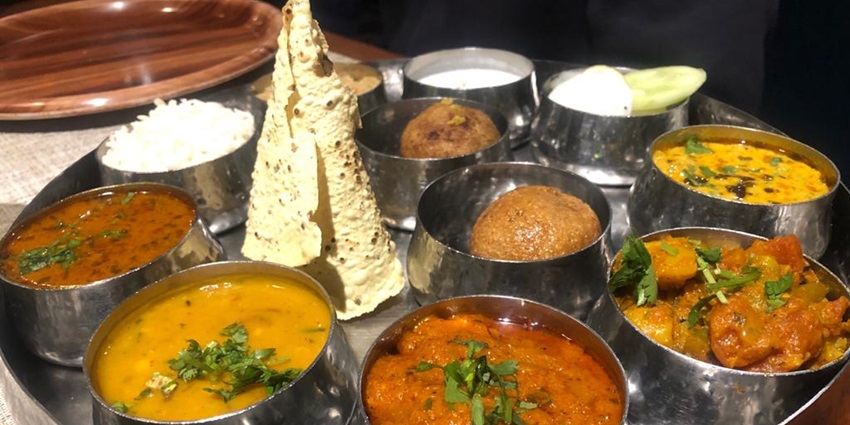
Photo: Simranjeet Sidhu / Wikimedia Commons
Most resorts and hotels near Ranthambore National Park have in-house restaurants offering Indian, Rajasthani, and continental cuisines. Tiger Den Resort and Vivanta by Taj are known for their delectable Rajasthani dishes. For local food lovers, roadside eateries in Sawai Madhopur serve traditional Rajasthani dishes such as dal baati churma and laal maas.
Other Factors To Consider
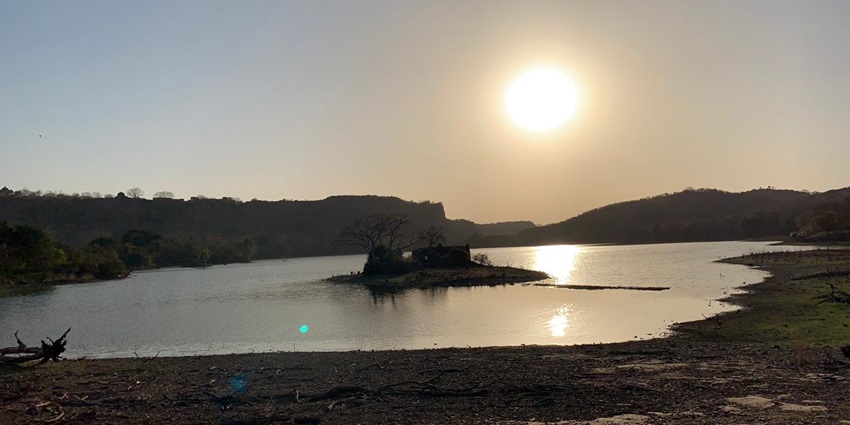
Photo: Pranav.jain25 / Wikimedia Commons
The best time to visit Ranthambore National Park is from October to March, as the weather is pleasant and suitable for safaris. During this time, wildlife sightings are frequent as animals are more active in the cooler temperatures.
Average Cost Of The Trip
A weekend trip cost to Ranthambore National Park can cost anywhere between ₹8,000 to ₹20,000 per person, depending on the type of accommodation and safari options. For a budget-friendly experience, staying in mid-range hotels and opting for shared safaris can keep costs around ₹8,000 to ₹10,000. Luxury travellers can expect to spend upwards of ₹15,000, which includes private safaris, high-end accommodation, and premium services. The Ranthambore National Park entry fee for jeep safaris is ₹1400 per person.
Tips For Travellers
- Book safaris in advance, especially during peak season, as slots fill up quickly.
- Carry binoculars for better wildlife spotting during the safari.
- Wear neutral-coloured clothing to blend in with the environment and avoid disturbing wildlife.
- Stay hydrated and carry sun protection like hats and sunscreen, especially during warmer months.
- Respect wildlife rules and avoid loud noises or sudden movements that could scare the animals.
Suggested Read: Places To Visit In Ajmer
Ranthambore National Park offers an unparalleled blend of wildlife, history, and natural beauty, making it a must-visit destination for nature enthusiasts and history buffs. With its diverse landscapes, abundant wildlife, and historic sites, there’s something for everyone to enjoy. For a seamless and unforgettable experience, let TripXL handle your travel arrangements. From safari bookings to accommodation, TripXL ensures a hassle-free trip, allowing you to focus on the adventure.
Cover Photo: Pranav.jain25 / Wikimedia Commons


 WhatsApp
WhatsApp
 Twitter
Twitter









